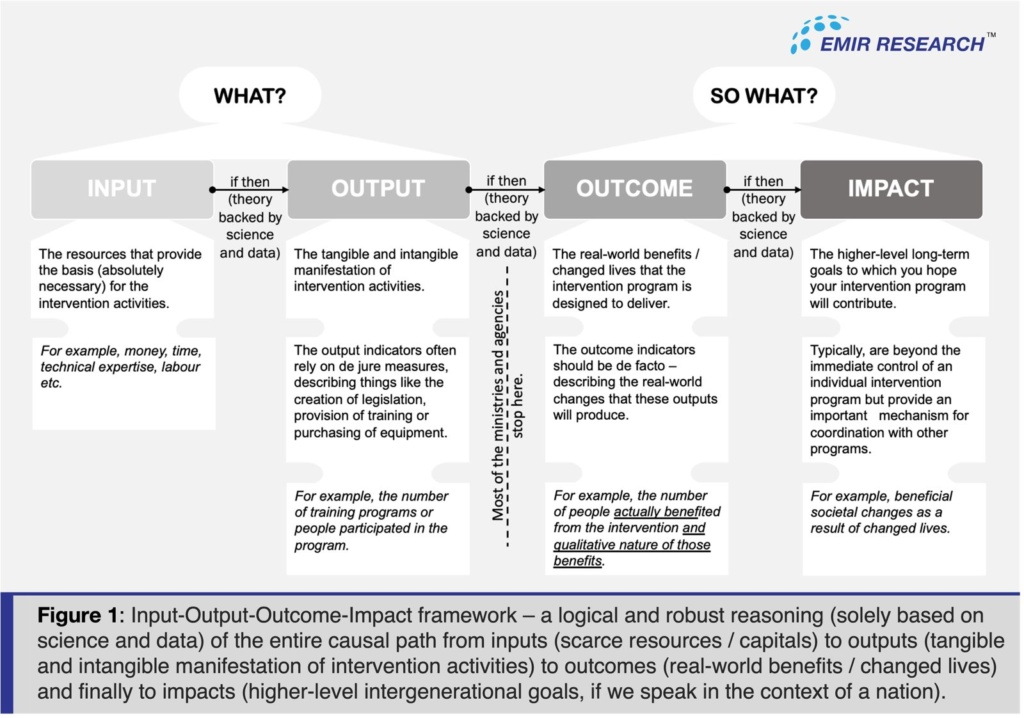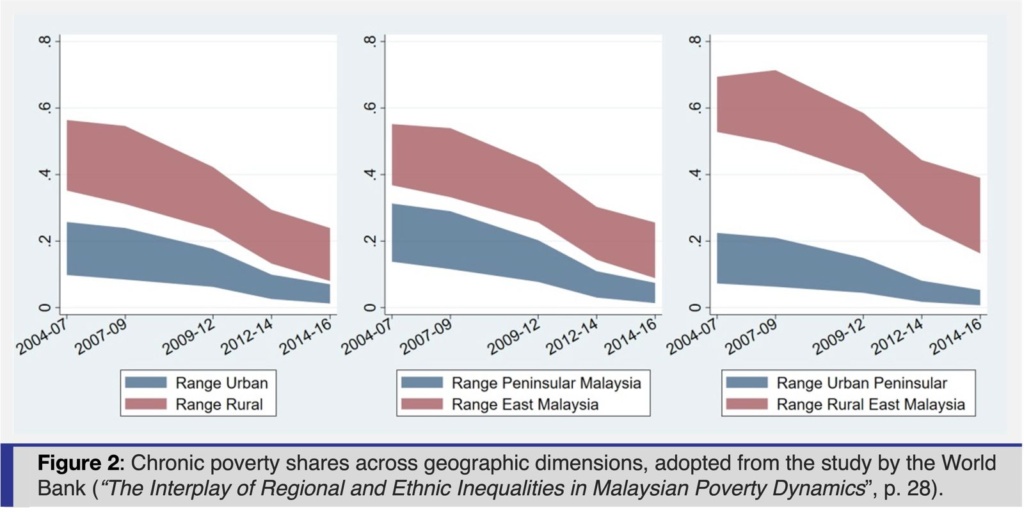
Published by AstroAwani & BusinessToday, image by AstroAwani.
Malaysia, a nation celebrated for its cultural diversity and economic growth over the years, continues to wrestle with a deeply ingrained issue: poverty. Despite noticeable progress in reducing overall poverty rates, the nation continues to face a complex poverty landscape — the issue remains entrenched in specific regions and demographic groups, underscoring the gap between economic prosperity and social inequality.
The poverty rate stood at 6.2 per cent of the population in 2022, according to the Household Income and Expenditure Survey 2022 released by the Department of Statistics Malaysia (DOSM) on 27 July 2023.
Although this figure may represent an improvement from the years prior, it doesn’t delve into various aspects and dimensions of poverty, failing to take into account regional disparities and the prevalence of relative poverty, where individuals and families still struggle to meet a dignified standard of living with many essential human development resources remaining inaccessible to them. Beneath these dry numbers are stories of individuals and communities facing real hardship.
Poverty is not just about income level but encompasses a spectrum of challenges, from access to education and healthcare to economic opportunities and social wellbeing. It’s a complex and multifaceted problem, as encapsulated, for instance, in the Global Multidimensional Poverty Index, demanding a deeper understanding and more practical solutions.
Therefore, poverty must be revisited and analysed using different approaches instead of conventional monitoring of aggregate figures, given the current administration’s aspiration of deploying long overdue transformative strategies for nation-building.
One instrumental approach to understanding poverty intimately would be for the government to study poverty dynamics at the level of individuals and households. This is best done through qualitative interviews and panel surveys that follow the same households over time. It was reported that most of the developing countries, with Malaysia not being an exception, failed to observe poverty from this perspective.
Once the dynamics of poverty and micro-level poverty transition patterns – factors impacting (or being impacted by) poverty as felt on the ground – are identified, this knowledge can become a robust foundation for implementing the Input-Output-Outcome-Impact (IOOI) framework, enhancing the effectiveness of policymaking (Figure 1).

Another valuable approach to studying poverty is vulnerability analysis, as proposed by Dang and Lanjouw (2017), which classified people into three income groups – the poor, the vulnerable (people who are not poor but have a high risk of falling into poverty) and the economically secure, providing a broader understanding of income mobility.
While poverty has been a long-standing and highly persistent social issue in Malaysia, it is vital to conduct a comprehensive analysis of the situation, especially amidst the rising cost of living, to identify whether it is a chronic or transitory phenomenon.
Studying poverty dynamics helps identify whether people are consistently poor or move in and out of poverty over time. Ascertaining this is especially important as economic devastation caused by the COVID-19 pandemic has substantially widened the former B40 category. Also, continuing economic instability and climate changes, hindering agricultural yields, potentially drive people into transitory poverty.
Transitory poverty is also linked to the emergence of new or urban poor.
Hence, insights from micro-level poverty dynamics and vulnerability analysis can enrich our understanding of the root causes of poverty, reassess Malaysia’s existing policies in terms of their effectiveness in alleviating and eliminating poverty as it is felt on the ground and guide the needed effective anti-poverty policies.
Furthermore, a nation of three main ethnic groups necessitates a deeper examination of the link between poverty and interethnic inequalities.
According to empirical data analysis, although relative (proportional change) ethnic income inequality in Malaysia has considerably reduced from the 1970s to 2020, ethnic income inequality in absolute terms (absolute difference) is higher now than 50 years ago, suggesting that ethnic income inequality has increased.
Similarly, for poverty, the World Bank’s extensive study, using their yardstick of poverty (different from that by DOSM, where the poverty line was not updated in real terms from 1977 until 2020), found that in 2004, the Bumiputera group had a poverty ratio of 49.1%, compared to 17.7% for the Chinese and 33.4% for the Indian groups. In 2016, these figures dropped significantly to 13.1% (a 73% reduction) for Bumiputera, 2.4% (an 86% reduction) for Chinese, and 7.3% (a 78% reduction) for Indians. Notably, the 2004 poverty ratio for Bumiputera was 2.8 times that of the Chinese group, which increased to 5.5 times in 2016. Meanwhile, Bumiputera’s share of national poverty increased from 81.4% in 2004 to 85.3% in 2016.
According to the latest Poverty in Malaysia 2022 report from DOSM, in 2022, relative poverty rates by ethnicity were 18.6% for Bumiputera, 12.1% for Chinese, and 13.7% for Indians – a decrease from 2019, when the rates were 18.8%, 12.3%, and 15.4%, respectively. However, absolute poverty rates told a different story, with Bumiputera increasing from 7.2% in 2019 to 7.9% in 2022, Chinese rising from 1.4% to 1.9%, and Indians from 4.8% to 5.4%.
These figures indicate that the New Economic Policy practices and structures initiated in 1971 and officially ended in 1991 but, unofficially, stretched far beyond two official decades, have yet to achieve the objectives.
The growth in overall mean income has shown empirically to be a far more influential factor in poverty reduction than the decrease in relative inequality among ethnic groups. Similarly, effective policies and corruption-free policy execution, with the strict criteria finetuned based on micro-level poverty data, aimed to assist those in need, regardless of race or religion, would naturally benefit Bumiputera the most.
In addition to interethnic disparities, addressing regional inequalities in poverty is crucial. In this regard, one of the most urgent concerns within Malaysia’s poverty situation is the urban-rural divide, bridging which is essential for achieving inclusive growth.
Rural areas continue to bear the brunt of poverty, with residents facing limited access to quality education, healthcare, and employment opportunities. Eastern states like Sabah, Sarawak and Kelantan have consistently reported higher poverty rates than wealthier states such as Selangor and Penang.
The World Bank study mentioned above also found that people residing in rural areas and East Malaysia have a significantly higher risk of being subjected to chronic poverty, where individuals or households are stuck in poverty over extended periods. Figure 2 demonstrates how the estimated bounds for the probability of being poor do not seem to narrow over the years under consideration for rural Malaysia.

The Poverty in Malaysia 2022 report by DOSM reveals an absolute poverty rate of 4.5% in urban areas and 12% in rural areas, indicating a large 7.5% difference between the groups.
Examining the trend in absolute poverty from 2019 to 2022, there’s an increase from 3.8% to 4.5% in urban areas and a slight decrease from 12.4% to 12% in rural areas.
The lack of substantial change in rural conditions aligns with EMIR Research’s 2020 findings. Fishermen, rice farmers, and Felda settlers, accustomed to self-reliant lifestyles due to limited economic opportunities, experienced minimal pandemic-related economic impact. Yet, the undeniable truth remains: rural poverty remains significantly higher and enduring.
On the other hand, the rising trend of urban poor due to rapid urbanisation’s economic promise and soaring living costs is equally concerning. High property prices and stagnant wages appear to push more urban residents into poverty.
Additionally, indigenous and stateless communities, in particular, often find themselves marginalised and disproportionately affected by poverty (refer to EMIR Research’s earlier recommendations in “Prioritising the health and wellbeing of the Orang Asli” and “Alarming risks faced by the homegrown stateless community in Malaysia”). Understanding and addressing the unique challenges faced by these communities is essential for achieving inclusive development.
Inequality exacerbates poverty, as the wealthiest amass a disproportionate share of the nation’s wealth, leaving those at the bottom with limited progress opportunities. This widening wealth gap results in unequal sharing of the benefits of economic growth.
Despite government efforts, such as BR1M or the Malaysia Prihatin assistance package in response to COVID-19, these measures offer only temporary relief. As discussed above, policymakers can only attain more substantial and credible change through a broader understanding of the poverty dynamics and IOOI analysis.
Hence, more data-driven, comprehensive, inclusive and sustainable approaches are needed to combat poverty. Policymakers must credibly prioritise bridging gaps and ensuring equitable development that reaches every corner of the nation.
Dr Margarita Peredaryenko and Chan Myae San are part of the research team at EMIR Research, an independent think tank focused on strategic policy recommendations based on rigorous research.

